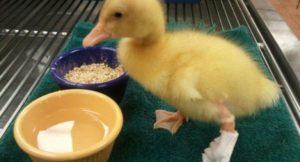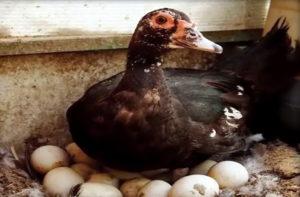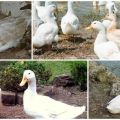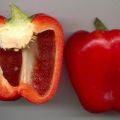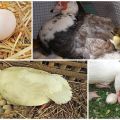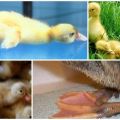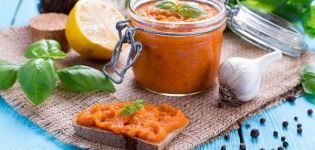Description and characteristics of the red bull Indoor breed, breeding and care
A large South American breed with a powerful physique and a beautiful red-chocolate feather color is becoming more and more popular in Russia and the CIS. Indo-duck red bull is bred for the sake of dietary meat, suitable for cooking, and high-calorie eggs added to baked goods. The bird is productive, non-aggressive, cleanliness, not capricious in keeping and feeding, has a developed maternal instinct.
Origin story
Indo-duck, also called musk duck, is a South American species. Despite the name, the bird is non-hybrid, developed naturally, and did not appear as a result of crossing turkeys and ducks. The only thing that makes an Indo-turkey look like a turkey is a red, bumpy growth above the beak. The ancestors of the species are wild muscovy ducks, tamed by South American Indians.
Wild relatives of the domestic Indo-duck living in South America make a nest in the trees, for which they are called tree ducks.
Description and characteristics of Indo-red bull
The musky breed is distinguished by its heavy build, well-developed muscles, strong lower limbs and wings. A large fold of skin hangs from the chest. A description of the red bull breed is given in the table.
| Weight | drake - 6 kg, females - 4 kg |
| Head | small, on a short neck, small, oval eyes |
| Wings | large, wide, close-fitting to the sides, short, not adapted for flight (but the duck may flutter a little, so it is advisable to trim the flight feathers) |
| Paws | strong, short, with wide membranes |
| Beak | regular, flattened, red bumpy growth on the beak and between the eyes secretes a musky secretion |
| Plumage | waterproof, but the grease is not as dense as other ducks |
| Color | rich, reddish-brown, sometimes with a greenish tint, the beak is dark at the end, the iris and paws are brown (as the bird ages, white feathers may appear on the wings, head, chest) |
Pros and cons
Maintenance, feeding and care
The red bull is not capricious in keeping the Indo-duck, adapted to moderate climatic conditions. When Indo-women are 3 months old, they are divided into brood flocks of drake and 4 females. To prevent the drakes from starting a struggle for leadership, each flock is housed in a separate fenced-in block, which includes a poultry house and a walking area. Individuals not included in the uterine group are slaughtered for meat at 4 months of age.
The house must be closed, insulated, ventilated, dry and clean. No more than 3 birds should live per 1 m2. In winter, the house is insulated with a thick layer of straw or sawdust bedding, the indoor temperature should remain positive. In summer, Indo-women spend most of the day in the paddock. It is good if there is a natural reservoir near the poultry house where birds can find insects. But in the absence of a reservoir, the red bull ducks do not suffer, they completely manage with a wide basin of water placed in the corral.

In the fall, with the first cold rains, Indo-dwellers stop letting out of the poultry house, otherwise they will freeze and their paws will freeze. In the diet of an Indo-duck, the red bull is also not capricious, but for good meat and egg productivity, an abundance of fiber and proteins in the diet is important. Birds are fed:
- fresh meadow grass;
- grain (wheat, corn, barley);
- wheat bran;
- boiled potatoes;
- garden tops;
- fresh root vegetables (beets, carrots);
- bone meal;
- feed yeast;
- cottage cheese, whey;
- mineral additives (chalk, shell rock, salt).
Breeding
The Indo-red bull is such a good mother that she often does not get out of the nest even for food. The owner has to bring food to the bird. Many farmers practice laying someone else's eggs under the indoctka, and she incubates them like her own.
For breeding in the spring, buy 4-7-day-old ducklings. Indoor women begin to rush from 6 months of age. Ducklings are kept in a warm comfortable room for up to 3 weeks. In the first week, the surface temperature should be 25-30 ° C, in the second - 20-25 ° C, in the third - 15-20 ° C. Then the young are kept at a temperature of 12-15 ° C. Indoor chicks incubate in the nest. It is made closed, placed a few centimeters above the floor level, and straw is placed inside.
In order for the offspring to be born healthy, it is necessary to dilute the gene pool. For this, females and males from different farms are crossed.
10-12 eggs are laid under the hen. She sits on them for about 35 days until the last chick hatches. Newborn ducklings are temporarily taken away, put in a box covered with straw and insulated with a lamp. After hatching the last chick is returned under the wing of the mother. Newborn ducklings peck only moving food, so boiled egg yolk is sprinkled on their backs.

Possible diseases
Muscovy ducks have a strong immune system, they only get sick with improper care and maintenance.
Possible diseases:
- rickets;
- avitaminosis;
- cannibalism;
- cloacite - inflammation of the cloaca;
- salpingoperitonitis - inflammation of the serous membranes of internal organs;
- catarrh - blockage of the goiter;
- poisoning.
These diseases are associated with a deficiency of calcium and vitamins in the body, the use of poor-quality feed, improper diet, overcrowding and uncomfortable living conditions. If you properly care for the red bull Indo-cows, then their breeding will become a very profitable activity.
